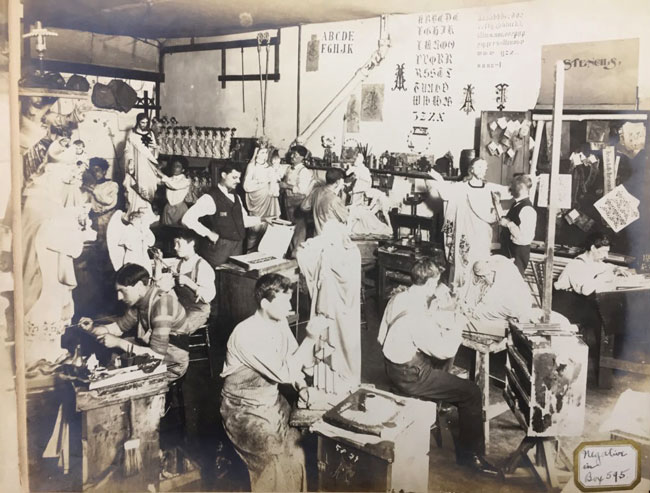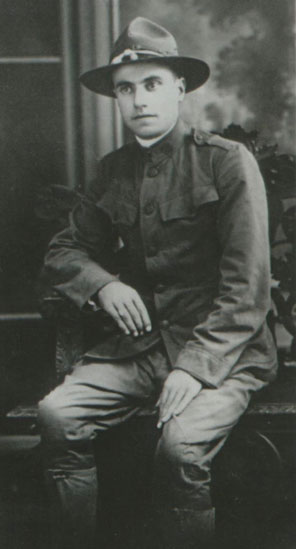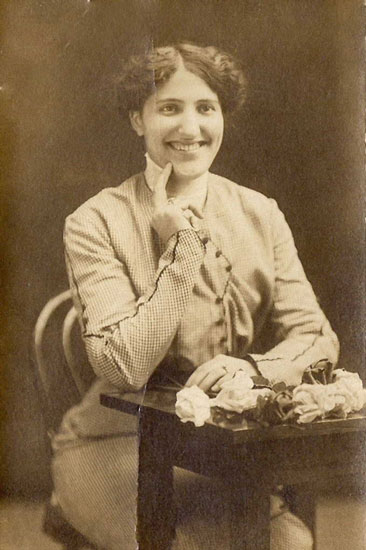The Statue Makers
Though a number of siblings have owned and lived in neighboring houses on Lyndale Street, such as the Stade and Bolin families, few can match the six siblings of the Dini family who lived at various times in the houses at 2934, 2935, 2946, 2947 and 2952 W. Lyndale with their spouses and children.
The Dini families on Lyndale were children of Giovanni & Francesca Poli from the ancient medieval town of Barga in the foothills of Tuscany north of Pisa, Italy. Barga and the surrounding towns have been home to figurinai de Gesso, or plaster statuary makers. Since the eighteenth century, these artisans travelled in small groups on foot throughout Italy and France on years-long journeys, stopping along the way to peddle commemorative statues of politicians and other novelties. Older craftsmen cast the items from molds, others painted them, and the youngest apprentices wandered the streets carrying the sculptures on boards on top of their heads trying to sell them to passersby.
By 1840 many figuranai had travelled as far as South America, Australia and the United States. In 1860, the four Daprato brothers from Barga decided to open a brick-and-mortar store in Chicago. The shop featured busts, classically-inspired statuettes and other objets d'art to clutter a Victorian home. Apprentice John Rigali rose through the ranks to become company president in 1890, and changed the firm's focus to solely producing religious statuary for churches. The company provided the interior decoration for many grand churches built by immigrant communities in Chicago and around the country. Daprato-Rigali Studios is still open today, though it is now located in Franklin Park.

Posed artisans demonstrate all the steps of decorating plaster statuary. Source: Daprato-Rigali Studios website
Guglielmo, the second-oldest of the Dini siblings, was the first to come to America when he was 19 years old in 1903, followed two years later by his 16-year-old brother Carlo. Both brothers came to Chicago with jobs already lined up as painters at the Daprato studio. Perhaps they already knew everyone at work, since most of their coworkers were from the same neighboring towns in Tuscany.
Guiseppe Mariotti worked as a carver at the statuary. In March of 1906 Guiseppe purchased the house at 2946 W. Lyndale. Guiseppe and Guglielmo must have been friends at work, because soon Guglielmo got to know Guiseppe's sister Anna, and they were married in 1910. The couple had a daughter together. Sadly Guglielmo passed away at the young age of 30 in 1915.
Brother Carlo Dini enlisted in the US Army during World War I. After the war he returned home and to work, and in 1920 he married his widowed sister-in-law Anna. The couple had a son a year later.

Carlo Dini 1887 - 1970 Source: Ancestry.com
The other Dini siblings came to America one-by-one. Italo in 1911, Maria and later Rosalba and her new husband Antony Moscardini in 1912. Giovanni came later, in 1921, and Josephine and Teresa later still. Most of the men and a few of the women were employed at the Daprato statuary, and remained working there for decades.

Maria Dini Rossi 1890 - 1970 Source: Ancestry.com
Anna purchased the two-flat at 2946 from her brother Guiseppe in 1911, and it remained in the family until 1985. Over the years many of the siblings lived in the second apartment there, or in other apartments nearby. Rosalba and Anthony bought the house at 2934 W. Lyndale in 1926, and this too, remained in the family until 1981. Several of the next generation of the family lived elsewhere on Lyndale, making them an influential presence on the history of the street.
